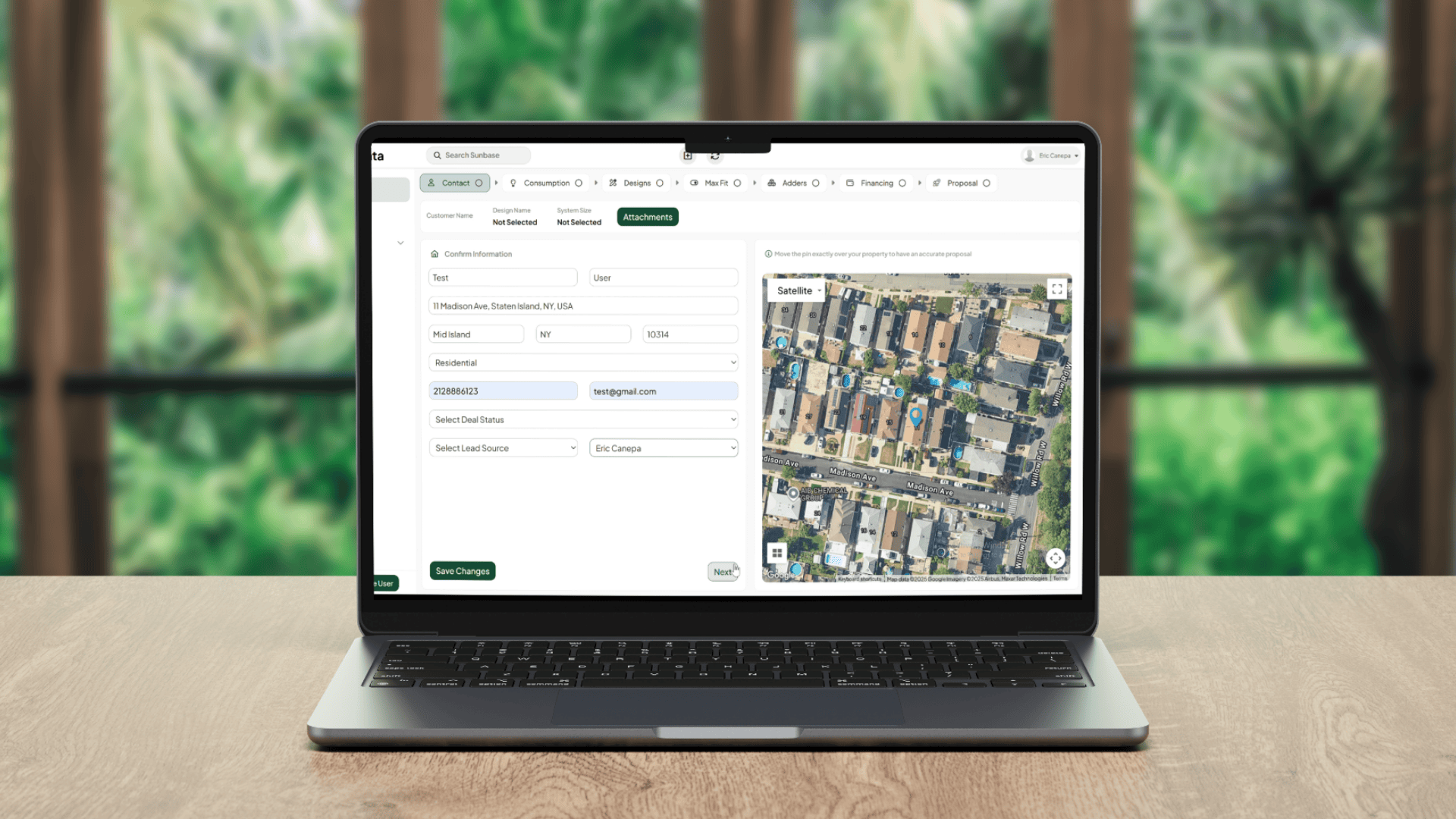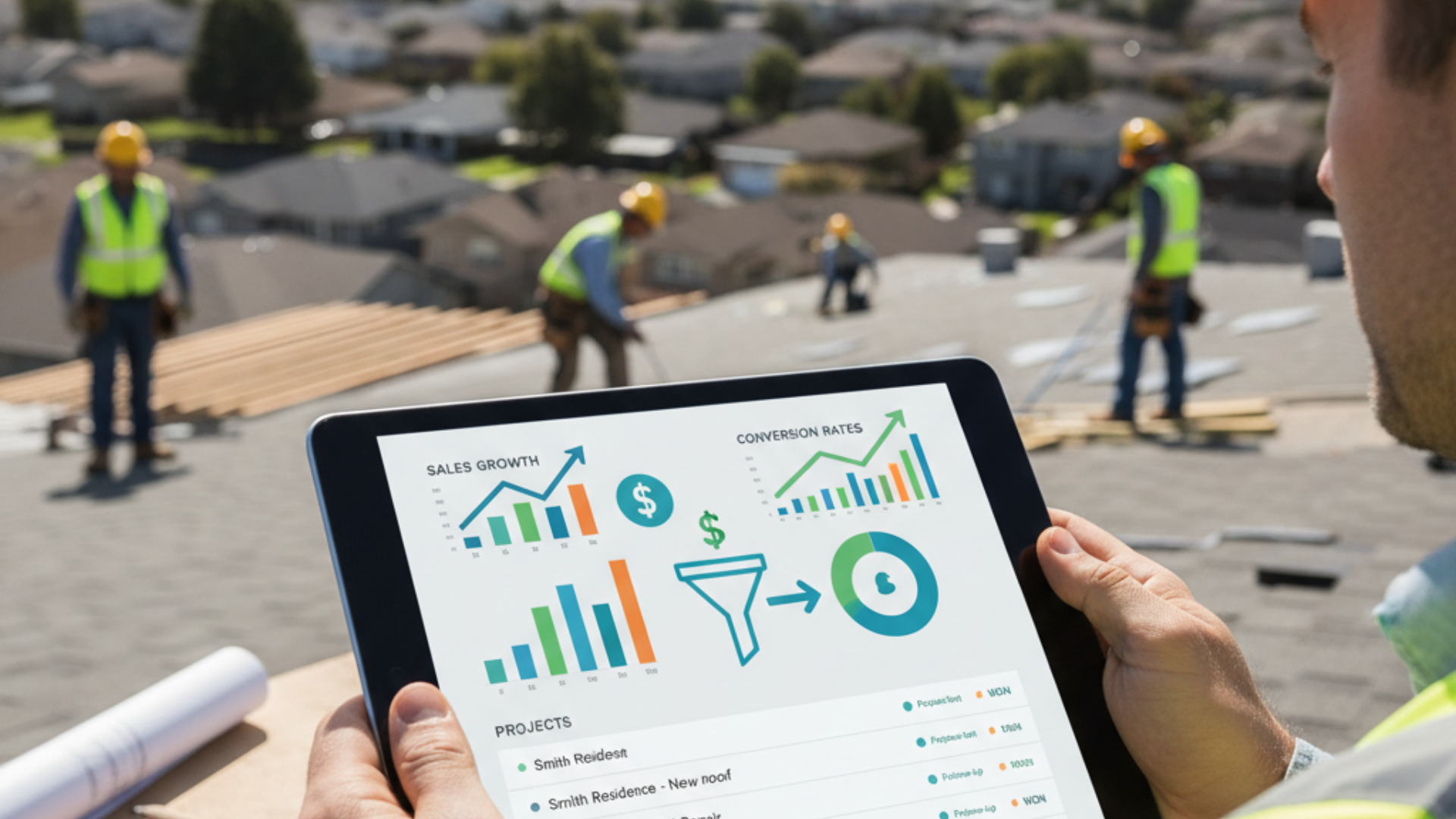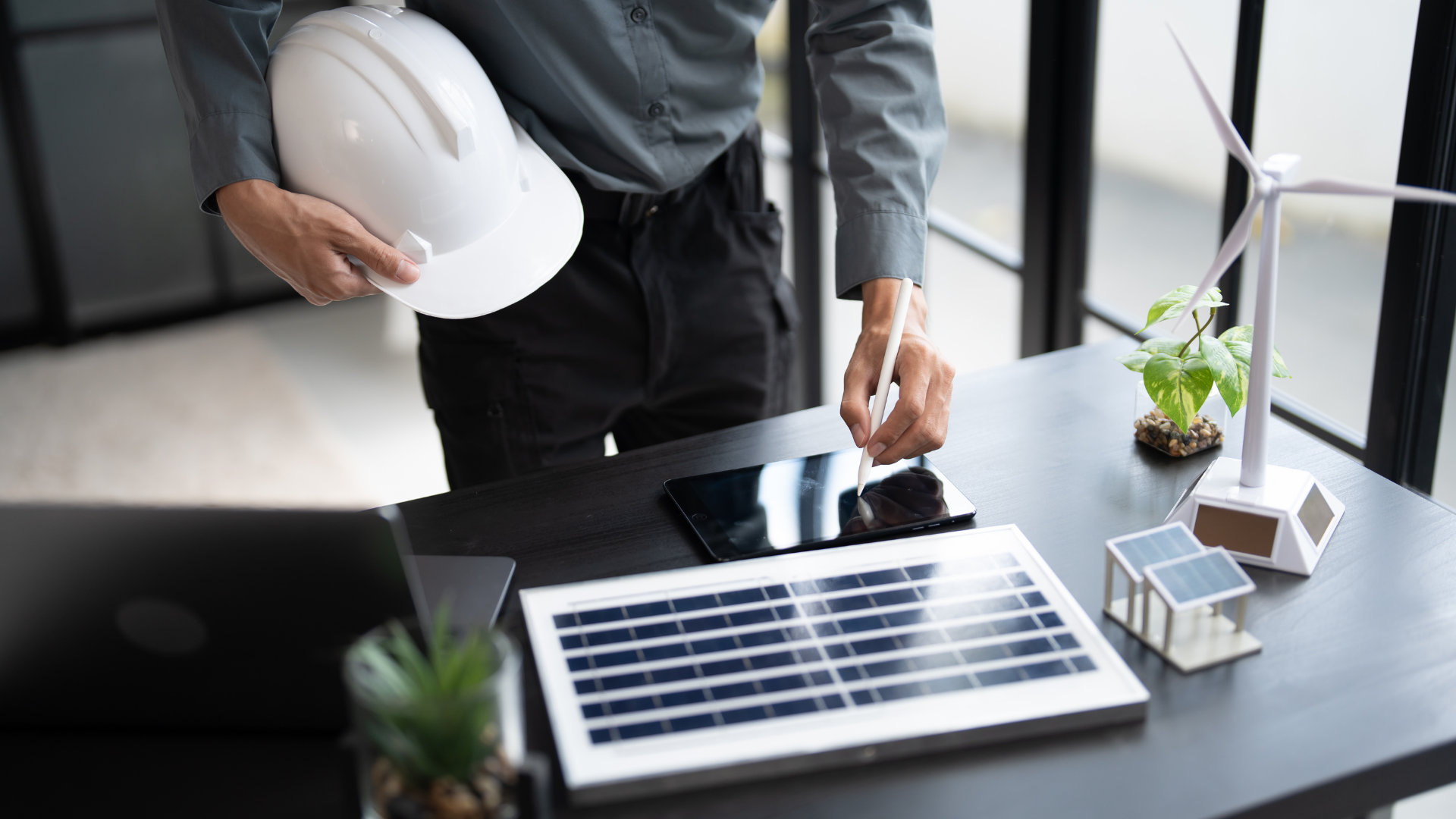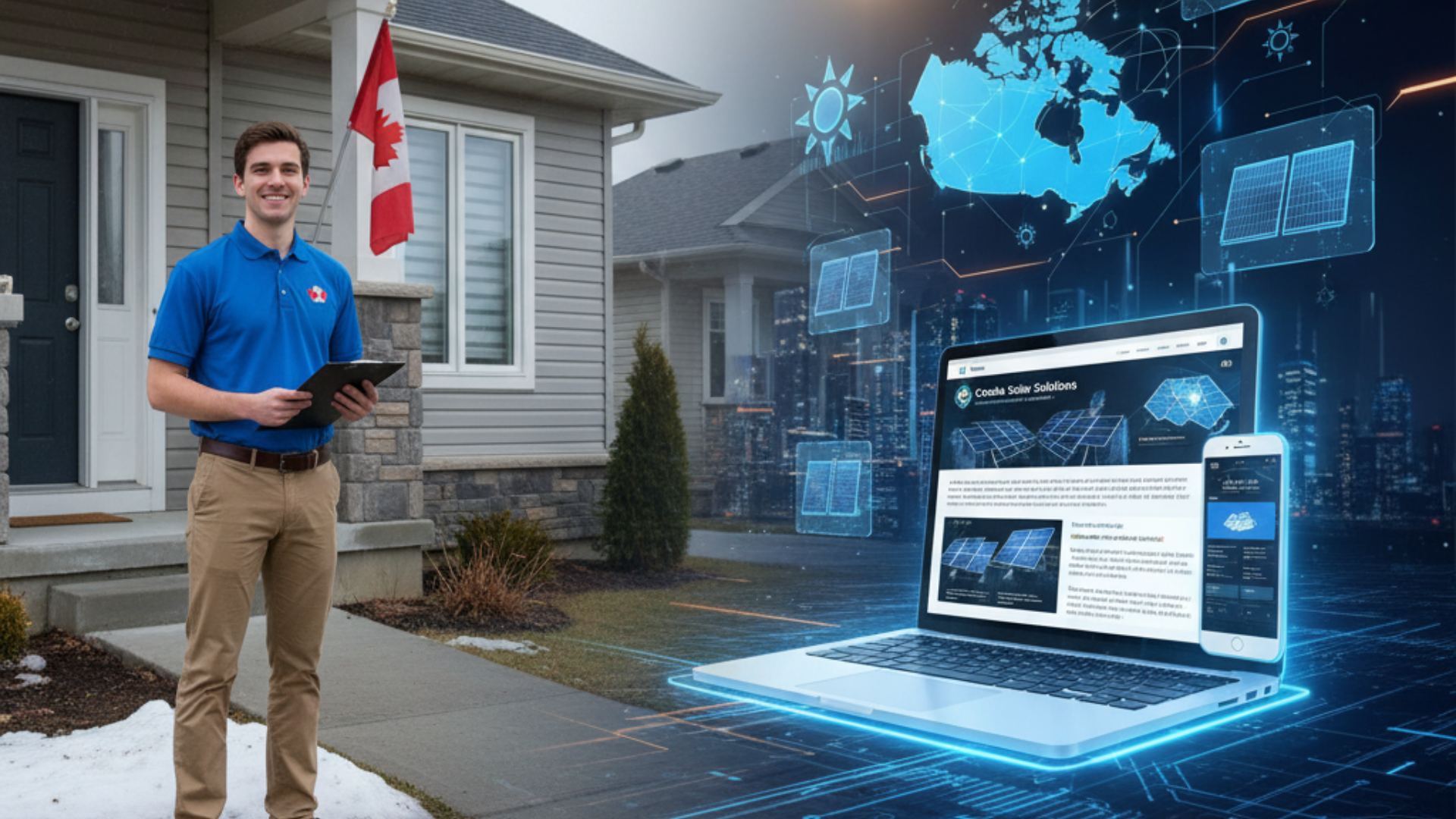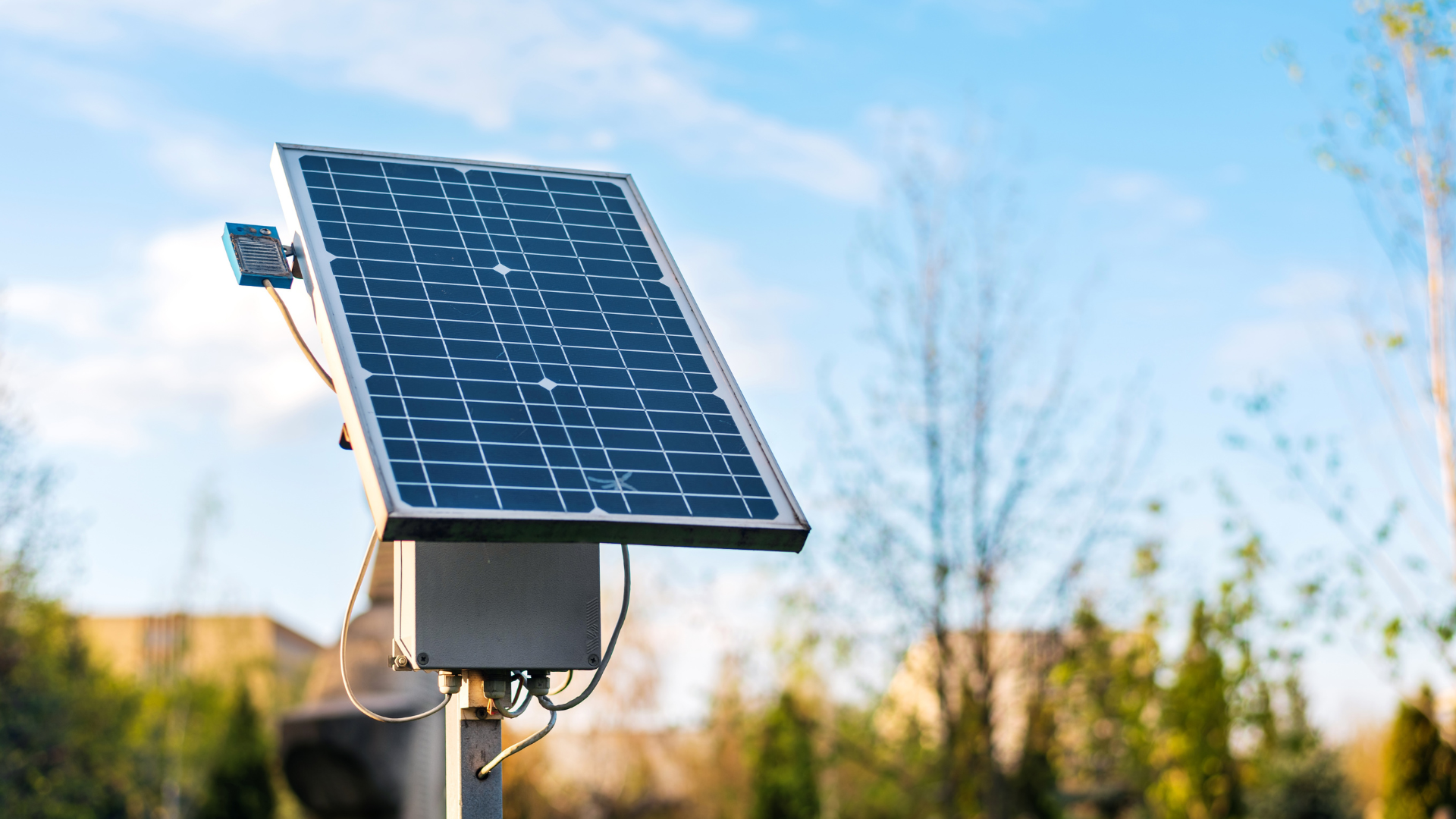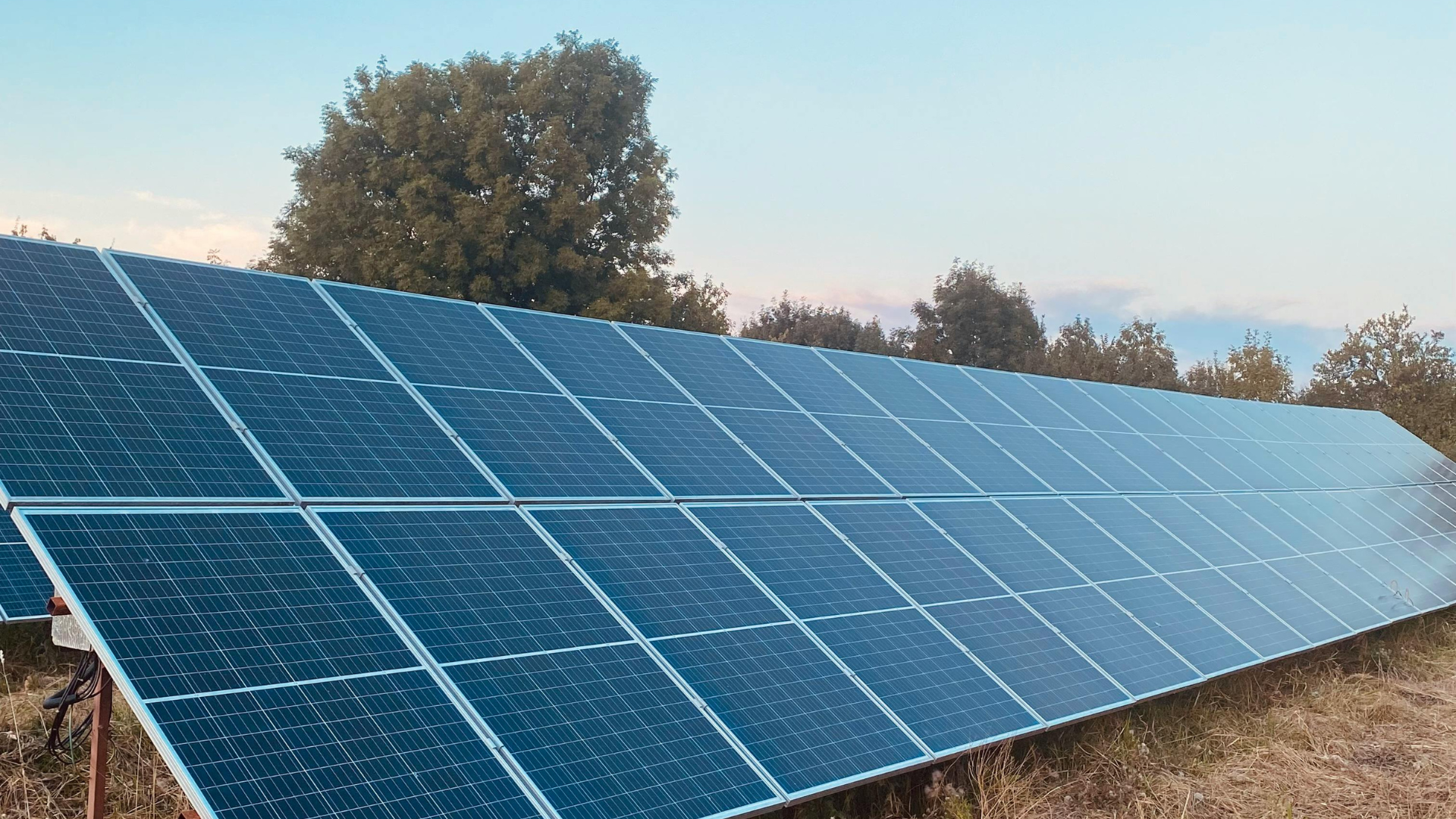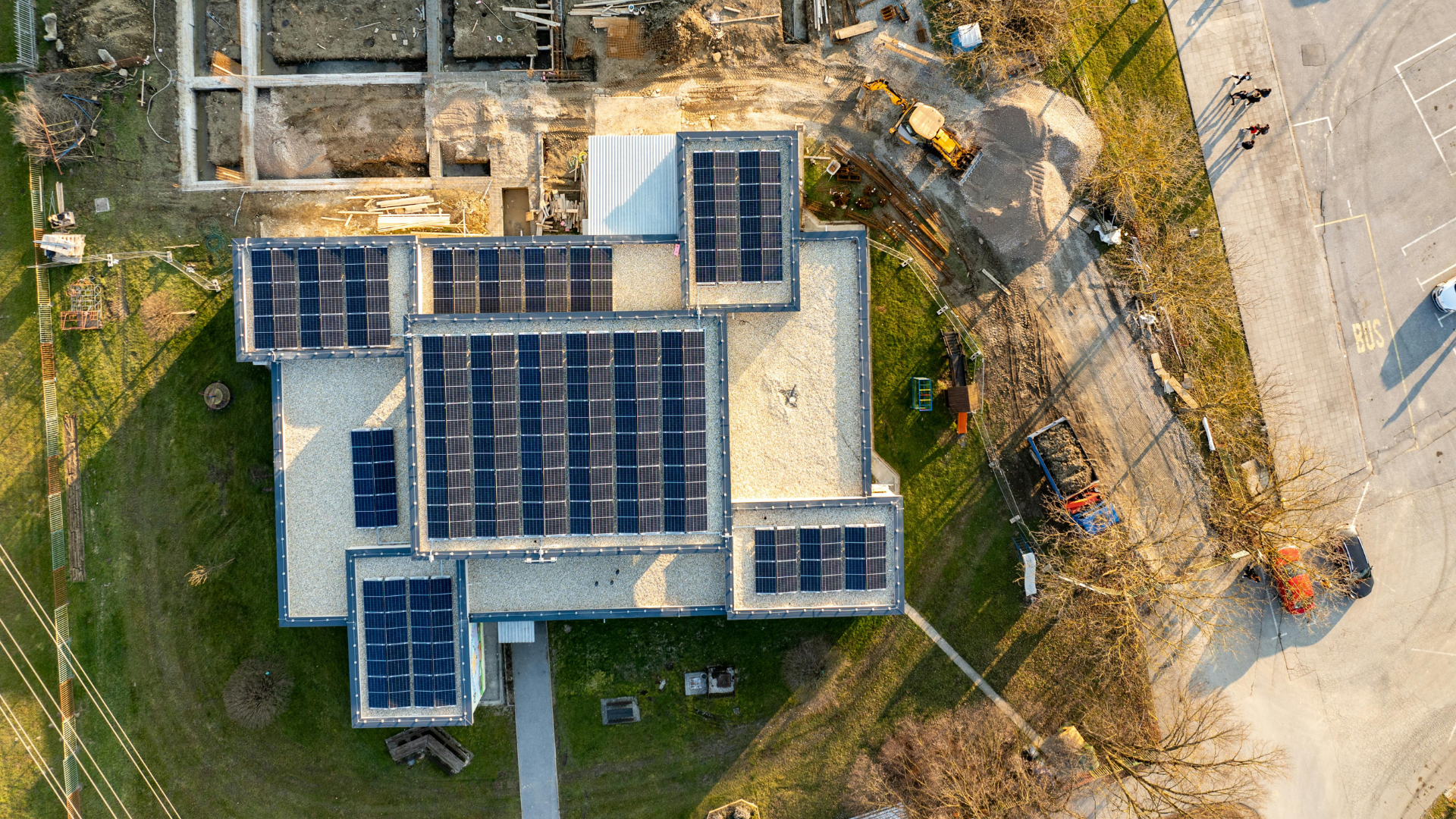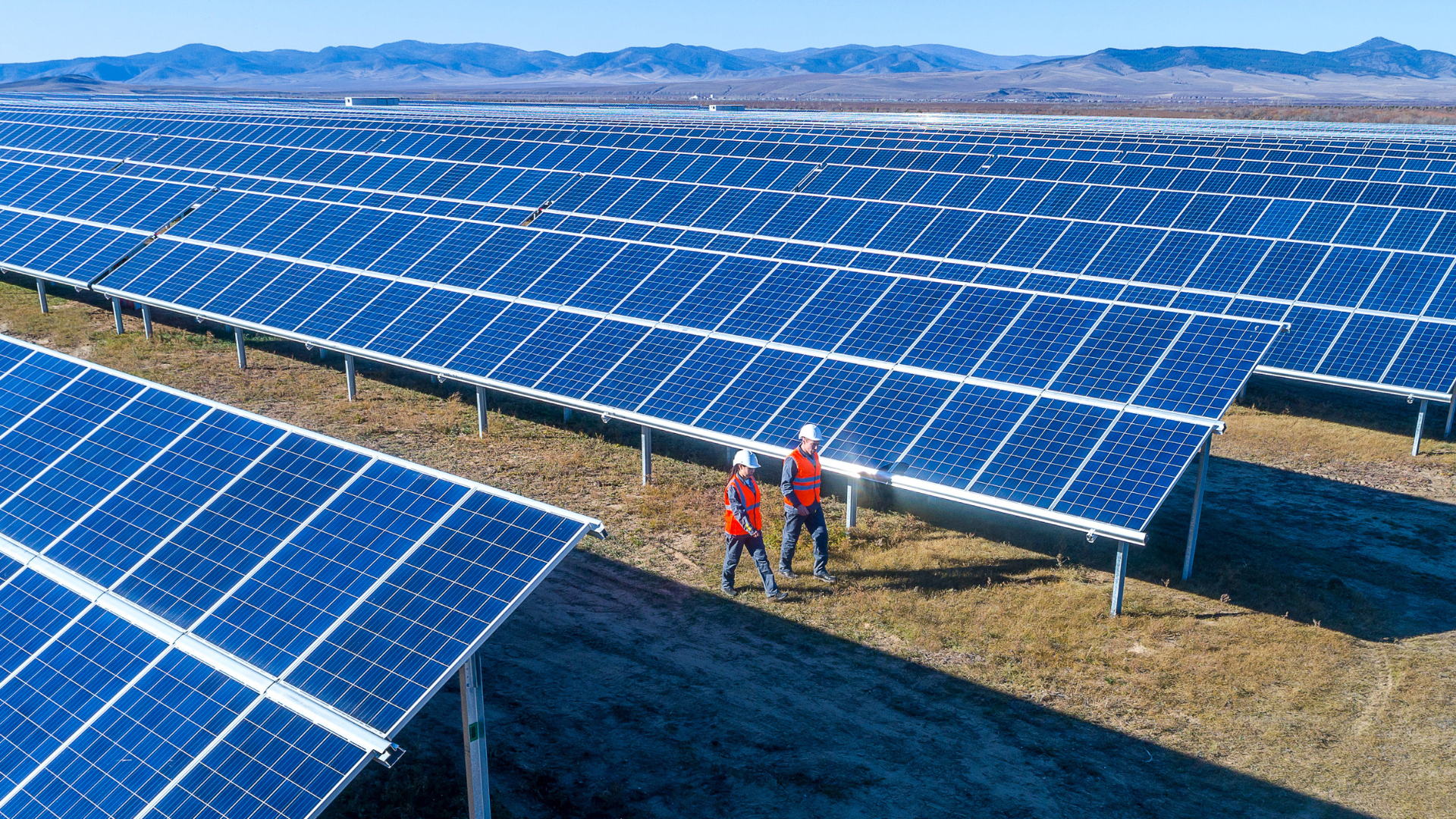June 27, 2024
The secret to achieving powerful solar performance isn’t just having panels; it’s mastering the placement of solar panels.
That's where solar panel placement matters more than you think because it affects the amount of solar radiation the panels can collect, and consequently, the energy they produce. From the tilt and orientation to avoiding shade and picking the best setup for your roof, every small decision can dramatically optimize solar energy efficiency.
Whether you’re new to solar or already in the industry, this guide breaks down the art (and a bit of the science) behind maximizing solar power performance.
Let's explore how to optimize solar panel placement, enabling you to achieve peak performance and maximum efficiency from your solar power system.
Solar Installation Tips: Best Solar Panel Placement for Maximum Power
To get the most out of your solar investment, solar panel placement matters more than you think. From proper tilt and orientation to precise solar shading analysis, smart design choices can dramatically optimize solar energy efficiency.
This guide explains how to determine the best solar panel angle by latitude, compare roof-mounted vs. ground-mounted solar, and apply proven solar installation tips to boost your system’s solar power performance and maximize every bit of sunlight.
Key Takeaways
- Optimal panel placement boosts output: Correct orientation and tilt, adjusted for latitude and seasons, can significantly increase solar panel efficiency and energy yield.
- Environmental and structural factors matter: Roof angle, material, shading, and local climate conditions directly impact solar panel performance and longevity.
- Technology enhances performance: Advanced options, such as bifacial panels, micro-inverters, and solar tracking systems, help maximize sunlight capture and efficiency.
- Professional installation ensures reliability: Consulting experts ensures proper placement, minimizes shading issues, and extends the lifespan of your solar system.
What Is Solar Panel Placement (and Why It Matters)?
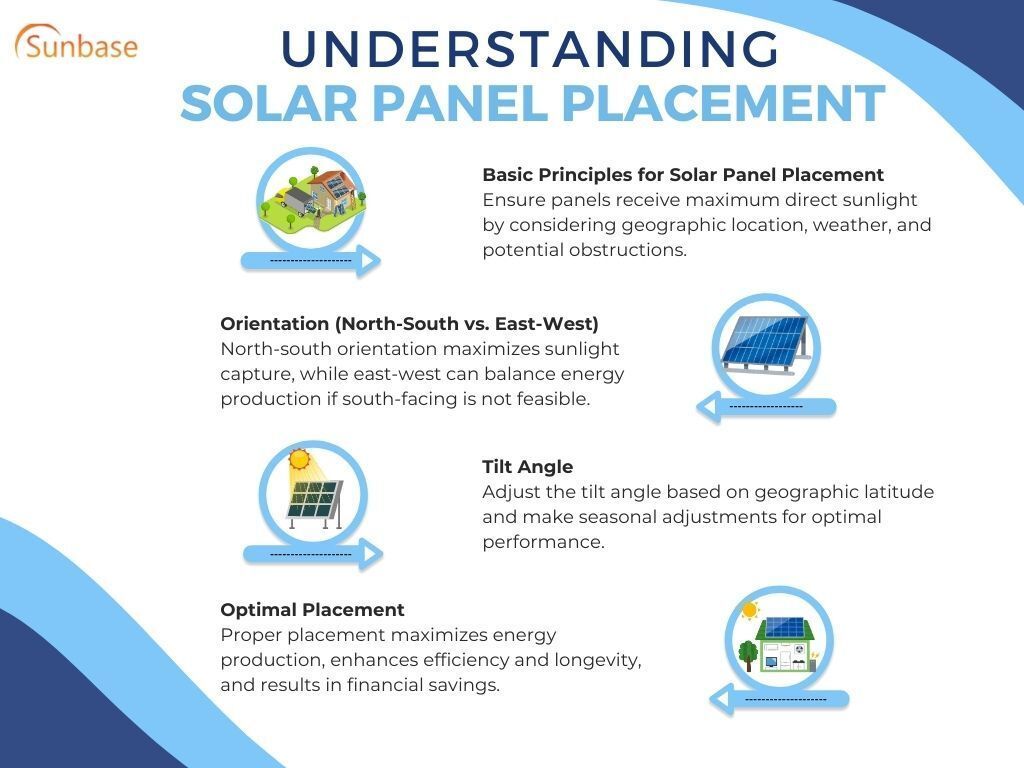
Maximizing the efficiency of your solar power system hinges on the strategic placement of your solar panels. Understanding and applying basic principles of solar panel placement can significantly enhance solar panel efficiency and the amount of electricity your system generates.
When installing solar panels, consider factors such as roof tilt and the various surfaces where panels can be installed, including roofs, walls, and the ground, and hiring a professional solar panel installer. Each option has its benefits and drawbacks.
Here are the key aspects to consider:
Basic principles of solar panel placement
The primary goal of solar panel placement is to ensure that your panels receive as much direct sunlight and solar radiation as possible throughout the day and across different seasons. This involves considering the geographic location, local weather patterns, and any potential obstructions that might cast shadows on your panels.
Solar panel orientation is crucial for maximizing solar energy efficiency. Proper orientation and placement can significantly boost solar energy production.
The best solar panel orientation, whether facing north, south, east, or west, depends on the hemisphere. It is affected by the exposure time to the sun, and thus, the electricity output of the panels is also affected.
Optimal placement takes advantage of the sun’s trajectory to maximize exposure to sunlight, thereby increasing the energy yield.
Choosing the Right Solar Panel Orientation (North-South vs East-West)
> North-South Orientation:
This direction for solar panels captures the maximum amount of sunlight throughout the day, particularly during peak sunlight hours.
The direction of solar panels is crucial for maximizing sunlight exposure and solar panel performance. In the Northern Hemisphere, panels should face south, while in the Southern Hemisphere, they should face north.
Additionally, west-facing panels can better match peak electricity demand in the evenings and reduce reliance on the grid during peak hours.
The correct orientation of solar panels can significantly enhance their performance. Conversely, in the Southern Hemisphere, the best direction for solar panels is true north.
> East-West Orientation:
While south-facing panels are ideal, there are situations where an east-west orientation may be more practical. This arrangement can be beneficial if your roof structure or landscape restricts a south-facing setup.
East-west-oriented panels can still capture significant sunlight, especially in the mornings and afternoons, and may help balance energy production throughout the day.
How to Find the Best Tilt Angle for Solar Panels
The tilt angle of solar panels is another critical factor that affects their performance. The ideal tilt angle, or optimum solar panel angle, depends on your geographic latitude:
Regularly adjusting the solar panel angle can optimize energy production throughout the year.
> Latitude-Based Tilt:
A general rule of thumb is to set the tilt angle equal to your latitude. For instance, if you are at 30° latitude, the panels should be tilted at a 30 ° angle.
The importance of solar panel angles in maximizing solar energy production cannot be overstated. It should be adjusted based on latitude and seasons to ensure efficient energy generation.
> Seasonal Adjustments:
To further optimize performance, adjust the tilt angle according to the season. Increase the tilt angle by about 15° in winter to capture more sunlight when the sun is lower in the sky, and decrease it by 15° in summer when the sun is higher.
Also, learn about How Many Solar Panels Are Needed To Power A House.
Why Proper Solar Panel Placement Maximizes Energy Output?
Why does solar panel placement matter? Optimal placement of solar panels is vital for several reasons:
- Maximized Energy Production: Correct orientation and tilt can significantly boost the solar panel output and the amount of electricity generated by your solar panels, ensuring you get the most out of your investment.
- Efficiency and Longevity: Proper placement reduces the strain on your solar system, improving its overall efficiency and extending the lifespan of your panels. Proper placement enhances the efficiency of solar panel systems and extends the lifespan of your panels.
- Financial Savings: Increased energy production leads to lower electricity bills and potentially higher returns on any surplus energy generated and fed back into the grid.
Top Factors to Consider Before Installing Solar Panels
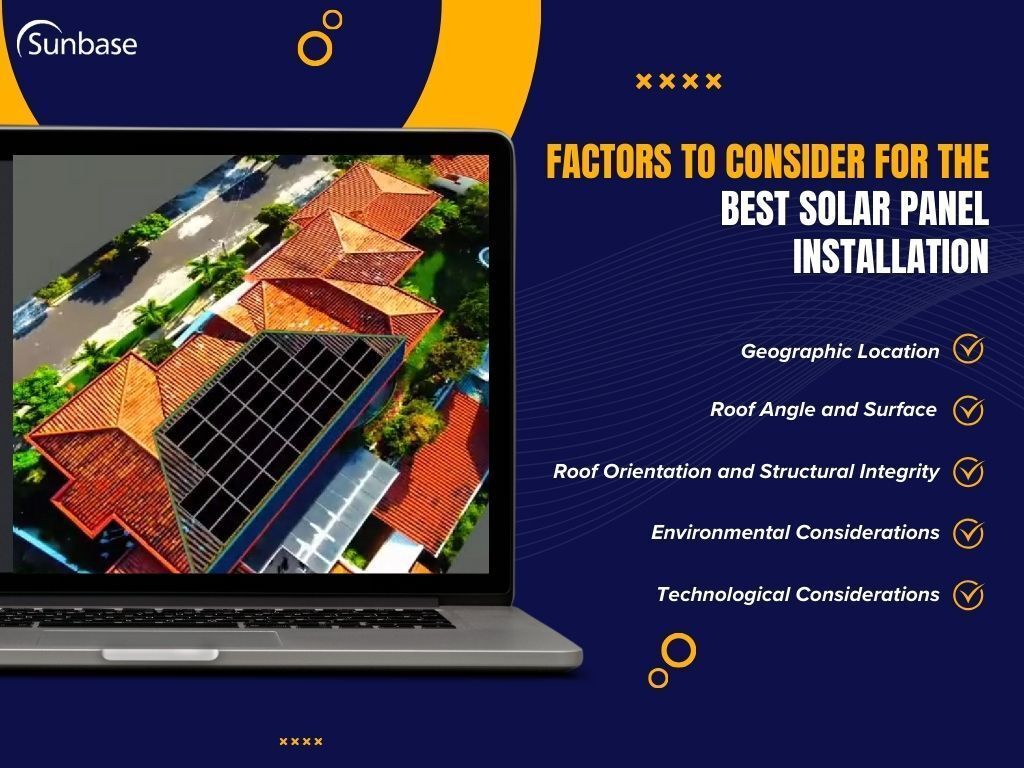
Optimizing the placement of solar panels requires careful consideration of several factors that impact their efficiency and effectiveness.
Developing a comprehensive solar panel placement strategy can ensure optimal performance and efficiency. Different solar panel systems, such as ground-mounted and roof-mounted, have their benefits and drawbacks.
Ground-mounted solar panel systems, for example, can be more efficient and easier to maintain but require more space. To ensure the best possible performance of your solar power system, consider factors such as geographic location, roof characteristics, environmental conditions, and technological advancements.
1. How Latitude Affects Solar Panel Angle and Orientation
The latitude of your location plays a critical role in determining the optimal orientation and tilt angle for your solar panels:
Optimizing solar panel orientation based on latitude can maximize sunlight exposure and energy production.
- Orientation: As previously mentioned, panels should generally face true south in the Northern Hemisphere and true north in the Southern Hemisphere to maximize sunlight exposure.
- Tilt Angle: The ideal solar panel tilt angle is often equal to the latitude of your location. Adjustments can be made seasonally to optimize performance further, such as increasing the tilt angle in winter and decreasing it in summer to account for the sun’s varying position in the sky.
2. Finding the Ideal Roof Angle and Surface for Solar Panels
Ideal tilt angles for different locations:
- Low-Latitude Regions: In regions closer to the equator, a flatter tilt angle (close to horizontal) is more effective, as the sun is higher in the sky throughout the year.
Optimizing the tilt angle based on your location can enhance energy production and efficiency:
- High-Latitude Regions: In regions further from the equator, a steeper tilt angle is beneficial to capture more sunlight during the shorter winter days.
Roof material and its suitability:
The type of roof material can affect the installation process and the durability of your solar panel system:
Different roof materials may require specific solar panel mounting systems to ensure secure and efficient installation.
- Asphalt Shingles: Common and generally suitable for solar panel installation.
- Metal Roofs: Durable and long-lasting, often ideal for mounting solar panels.
- Tile Roofs: Require special mounting hardware and careful installation to avoid damage.
3. Roof Orientation and Structural Integrity
South-facing roofs vs. other orientations:
While south-facing roofs are optimal, east- and west-facing roofs can also be effective, especially with modern solar technology that can adjust to different light conditions. Adhering to solar panel orientation guidelines can maximize sunlight exposure and energy production. The choice depends on:
- Available Roof Space: The amount of space available on each side of the roof.
- Energy Needs: Balancing energy production throughout the day if peak usage occurs in the morning or evening.
Ensuring the roof can support the weight of the panels:
Before installation, it’s crucial to assess the structural integrity of the roof. Understanding solar panel weight considerations is vital for ensuring the structural integrity of your roof.
- Load-Bearing Capacity: Ensure the roof can handle the weight of the solar panels and mounting hardware.
- Professional Assessment: A structural engineer or roofing professional can evaluate the roof’s condition and recommend any necessary reinforcements.
4. How Weather and Shading Affect Solar Panel Performance
Local climate conditions (snow, rain, wind):
- Snow: Heavy snowfall can cover panels, reducing efficiency. A steeper tilt angle can help snow slide off more easily. Regular solar panel maintenance is essential to ensure optimal performance in varying climate conditions.
- Rain: Generally beneficial as it can clean the panels, but proper drainage must be ensured to avoid water damage.
- Wind: Panels must be securely mounted to withstand high winds, especially in hurricane-prone areas.
Proximity to potential shading objects:
- Trees and Buildings: Nearby objects that cast shadows can significantly reduce the efficiency of solar panels. Consider trimming trees or selecting a location with minimal shading. Conducting a solar panel shading analysis can help identify and mitigate potential shading issues.
- Seasonal Changes: Account for changes in shading throughout the year as trees grow and the sun’s path changes.
5. Modern Solar Panel Technologies That Boost Efficiency
Comparing the efficiency of different types of solar panels can help you choose the best option for your needs.
Types of solar panels (monocrystalline vs. polycrystalline vs. thin-film):
- Monocrystalline: High efficiency and space-efficient, ideal for areas with limited space.
- Polycrystalline: Lower cost but slightly less efficient than monocrystalline.
- Thin-Film: Flexible and lightweight, suitable for unconventional spaces, but generally less efficient.
Innovations in solar panel technology (bifacial panels, micro-inverters):
Innovations such as bifacial panels and microinverters help optimize solar panel performance.
- Bifacial Panels: Capture sunlight from both sides, increasing efficiency when installed over reflective surfaces.
- Micro-Inverters: Optimize the performance of individual panels, enhancing overall system efficiency and reducing the impact of shading on a single panel.
Want to know if Solar Panels Work in the Shade? Click here.
How Sunbase Solar Design Software Can Help Optimize Solar Panel Placement
Accurate solar panel placement is the heart of any efficient solar system; it determines how much sunlight your panels capture and how much energy your system produces.
Sunbase Solar Design Software simplifies this complex process by combining automation, data precision, and real-time visualization tools that help designers and installers get it right from the start.
1. Roof Analysis:
Sunbase automatically detects roof shapes, angles, and obstructions using satellite imagery. This allows solar designers to instantly identify the most productive areas for panel placement, without spending hours manually measuring.
2. Smart Shading Simulation:
Shadows from trees, chimneys, or nearby buildings can significantly reduce energy yield. With Sunbase, users can simulate shading patterns throughout the year, helping them strategically position panels to minimize energy loss and maximize performance.
3. Real-Time Energy Output Estimation:
Every small placement change can impact the system’s total energy output. Sunbase provides real-time energy yield estimates based on location, tilt, azimuth, and panel orientation, ensuring every panel is optimized for the highest efficiency possible.
4. Seamless Integration with Design & Proposal Tools:
Designers can instantly generate professional proposals directly from the optimized layout, complete with savings projections and payback estimates. This makes it easier to present clients with a visually clear, data-backed solar design that inspires confidence and drives faster approvals.
With Sunbase, solar design teams can collaborate in real-time, share designs, and make adjustments instantly, ensuring sales, design, and engineering departments are always aligned.
Wrapping Up
Transitioning to solar energy is not only a smart financial investment but also a significant step towards a sustainable future.
In this process, optimizing the placement of your solar panels is a vital step in maximizing the efficiency and performance of your solar power system.
If you meticulously plan the placement of your solar panels, it can help you maximize energy production, reduce your carbon footprint, and achieve greater energy independence.
Design Smarter: Capture More Sun With Sunbase
Every degree and detail matters when you’re planning solar.
Sunbase Solar Software enables professionals to design optimized systems with precise solar panel placement, accurate tilt and orientation, and real-time solar shading analysis.
Get in touch with us and talk to our experts to book a 15-minute demo!
FAQs
1. Why is solar panel placement important?
Correct solar panel placement ensures maximum sunlight exposure, reducing losses and helping you optimize solar energy efficiency for consistent output.
2. What is the ideal solar panel tilt and orientation?
The best solar panel tilt and orientation depend on your latitude. Generally, panels tilted at an angle equal to your latitude and facing true south (in the Northern Hemisphere) deliver the best solar power performance.
3. Roof-mounted vs. ground-mounted solar: which is better?
Roof-mounted solar saves space and is ideal for residential projects, while ground-mounted solar allows greater flexibility in solar panel placement and tilt adjustments, making it perfect for commercial or large-scale systems.
4. How can software help increase solar panel output?
Tools like Sunbase Solar Software use precise mapping, solar shading analysis, and smart modeling to increase solar panel output by optimizing system design and minimizing inefficiencies.
One Platform. Zero Chaos. Run Your Entire Business in One Place.
Sunbase replaces your CRM, proposals, scheduling, job tracking, and reporting tools — all inside one clean, connected platform.
About Sunbase
The All-In-One Platform to Run Your Entire Business
Sunbase helps you organize operations, streamline daily workflows, and manage everything - from first customer contact to final project deliver- in one connected system.
Our Mission
- Organize your business.
- Optimize your workflow.
- Automate what slows you down.
Why Businesses Choose Sunbase
One Connected Workflow
Replace scattered tools and manual processes with a single platform that brings together your team, tasks, customers, jobs, and performance data.
🌎 Global Presence
Serving the United States, Canada, India, LATAM, Australia, and 10+ international markets.
👥 11,000+ Users
Trusted by contractors, installers, project managers, sales teams, and field technicians.
🏗️ Built for All Sizes
From small contracting teams to fast-growing enterprises, Sunbase adapts to your workflow.
Useful Links For You
Stop Managing Your Business Manually. Automate It.
Sunbase automates workflows, reduces mistakes, and helps your team get more done - without hiring extra staff or juggling multiple tools.



